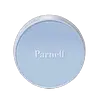What's inside
What's inside
 Key Ingredients
Key Ingredients

 Benefits
Benefits

 Concerns
Concerns

 Ingredients Side-by-side
Ingredients Side-by-side

Water
Skin ConditioningCI 77891
Cosmetic ColorantDimethicone
EmollientIsododecane
EmollientCaprylyl Methicone
Skin ConditioningButylene Glycol
HumectantSilica
AbrasiveHydrogenated Polyisobutene
EmollientLauryl PEG-9 Polydimethylsiloxyethyl Dimethicone
Skin ConditioningCI 77492
Cosmetic ColorantTrimethylsiloxysilicate
EmollientNiacinamide
SmoothingPentaerythrityl Tetraethylhexanoate
EmollientPhenyl Trimethicone
Skin ConditioningOctyldodecanol
Emollient1,2-Hexanediol
Skin ConditioningDisteardimonium Hectorite
StabilisingCetyl PEG/PPG-10/1 Dimethicone
EmulsifyingMagnesium Sulfate
Polyglyceryl-3 Polydimethylsiloxyethyl Dimethicone
Skin ConditioningCI 77491
Cosmetic ColorantSynthetic Fluorphlogopite
Polyhydroxystearic Acid
EmulsifyingAluminum Hydroxide
EmollientPolyglyceryl-4 Isostearate
EmulsifyingDimethicone/Vinyl Dimethicone Crosspolymer
Skin ConditioningVinyl Dimethicone/Methicone Silsesquioxane Crosspolymer
Stearic Acid
CleansingCI 77499
Cosmetic ColorantAlumina
AbrasiveTriethoxycaprylylsilane
Glyceryl Behenate/Eicosadioate
EmollientTribehenin
EmollientIsopropyl Titanium Triisostearate
EmollientLecithin
EmollientEthylhexyl Palmitate
EmollientIsopropyl Myristate
EmollientIsostearic Acid
CleansingAdenosine
Skin ConditioningTrisodium Ethylenediamine Disuccinate
Polyglyceryl-3 Polyricinoleate
EmulsifyingNeopentyl Glycol Diethylhexanoate
EmollientCetearyl Alcohol
EmollientTocopherol
AntioxidantPentaerythrityl Tetra-Di-T-Butyl Hydroxyhydrocinnamate
AntioxidantWater, CI 77891, Dimethicone, Isododecane, Caprylyl Methicone, Butylene Glycol, Silica, Hydrogenated Polyisobutene, Lauryl PEG-9 Polydimethylsiloxyethyl Dimethicone, CI 77492, Trimethylsiloxysilicate, Niacinamide, Pentaerythrityl Tetraethylhexanoate, Phenyl Trimethicone, Octyldodecanol, 1,2-Hexanediol, Disteardimonium Hectorite, Cetyl PEG/PPG-10/1 Dimethicone, Magnesium Sulfate, Polyglyceryl-3 Polydimethylsiloxyethyl Dimethicone, CI 77491, Synthetic Fluorphlogopite, Polyhydroxystearic Acid, Aluminum Hydroxide, Polyglyceryl-4 Isostearate, Dimethicone/Vinyl Dimethicone Crosspolymer, Vinyl Dimethicone/Methicone Silsesquioxane Crosspolymer, Stearic Acid, CI 77499, Alumina, Triethoxycaprylylsilane, Glyceryl Behenate/Eicosadioate, Tribehenin, Isopropyl Titanium Triisostearate, Lecithin, Ethylhexyl Palmitate, Isopropyl Myristate, Isostearic Acid, Adenosine, Trisodium Ethylenediamine Disuccinate, Polyglyceryl-3 Polyricinoleate, Neopentyl Glycol Diethylhexanoate, Cetearyl Alcohol, Tocopherol, Pentaerythrityl Tetra-Di-T-Butyl Hydroxyhydrocinnamate
Water
Skin Conditioning1,2-Hexanediol
Skin ConditioningButylene Glycol
HumectantXanthan Gum
EmulsifyingDisodium EDTA
Silica
AbrasiveAluminum Starch Octenylsuccinate
AbsorbentDimethicone
EmollientBentonite
AbsorbentEthylhexylglycerin
Skin ConditioningHydrolyzed Collagen
EmollientBifida Ferment Lysate
Skin ConditioningLactobacillus Ferment
Skin ConditioningPseudoalteromonas Ferment Extract
HumectantSodium Hyaluronate
HumectantTocopherol
AntioxidantHydrolyzed Elastin
EmollientWater, 1,2-Hexanediol, Butylene Glycol, Xanthan Gum, Disodium EDTA, Silica, Aluminum Starch Octenylsuccinate, Dimethicone, Bentonite, Ethylhexylglycerin, Hydrolyzed Collagen, Bifida Ferment Lysate, Lactobacillus Ferment, Pseudoalteromonas Ferment Extract, Sodium Hyaluronate, Tocopherol, Hydrolyzed Elastin
 Reviews
Reviews

Ingredients Explained
These ingredients are found in both products.
Ingredients higher up in an ingredient list are typically present in a larger amount.
1,2-Hexanediol is a synthetic liquid and another multi-functional powerhouse.
It is a:
- Humectant, drawing moisture into the skin
- Emollient, helping to soften skin
- Solvent, dispersing and stabilizing formulas
- Preservative booster, enhancing the antimicrobial activity of other preservatives
Butylene Glycol (or BG) is used within cosmetic products for a few different reasons:
Overall, Butylene Glycol is a safe and well-rounded ingredient that works well with other ingredients.
Though this ingredient works well with most skin types, some people with sensitive skin may experience a reaction such as allergic rashes, closed comedones, or itchiness.
Learn more about Butylene GlycolDimethicone is a type of synthetic silicone created from natural materials such as quartz.
What it does:
Dimethicone comes in different viscosities:
Depending on the viscosity, dimethicone has different properties.
Ingredients lists don't always show which type is used, so we recommend reaching out to the brand if you have questions about the viscosity.
This ingredient is unlikely to cause irritation because it does not get absorbed into skin. However, people with silicone allergies should be careful about using this ingredient.
Note: Dimethicone may contribute to pilling. This is because it is not oil or water soluble, so pilling may occur when layered with products. When mixed with heavy oils in a formula, the outcome is also quite greasy.
Learn more about DimethiconeSilica, also known as silicon dioxide, is a naturally occurring mineral. It is used as a fine, spherical, and porous powder in cosmetics.
Though it has exfoliant properties, the function of silica varies depending on the product.
The unique structure of silica enhances the spreadability and adds smoothness, making it a great texture enhancer.
It is also used as an active carrier, emulsifier, and mattifier due to its ability to absorb excess oil.
In some products, tiny microneedles called spicules are made from silica or hydrolyzed sponge. When you rub them in, they lightly polish away dead skin layers and enhance the penetration of active ingredients.
Learn more about SilicaTocopherol (also known as Vitamin E) is a common antioxidant used to help protect the skin from free-radicals and strengthen the skin barrier. It's also fat soluble - this means our skin is great at absorbing it.
Vitamin E also helps keep your natural skin lipids healthy. Your lipid skin barrier naturally consists of lipids, ceramides, and fatty acids. Vitamin E offers extra protection for your skin’s lipid barrier, keeping your skin healthy and nourished.
Another benefit is a bit of UV protection. Vitamin E helps reduce the damage caused by UVB rays. (It should not replace your sunscreen). Combining it with Vitamin C can decrease sunburned cells and hyperpigmentation after UV exposure.
You might have noticed Vitamin E + C often paired together. This is because it is great at stabilizing Vitamin C. Using the two together helps increase the effectiveness of both ingredients.
There are often claims that Vitamin E can reduce/prevent scarring, but these claims haven't been confirmed by scientific research.
Learn more about TocopherolWater. It's the most common cosmetic ingredient of all. You'll usually see it at the top of ingredient lists, meaning that it makes up the largest part of the product.
So why is it so popular? Water most often acts as a solvent - this means that it helps dissolve other ingredients into the formulation.
You'll also recognize water as that liquid we all need to stay alive. If you see this, drink a glass of water. Stay hydrated!
Learn more about Water